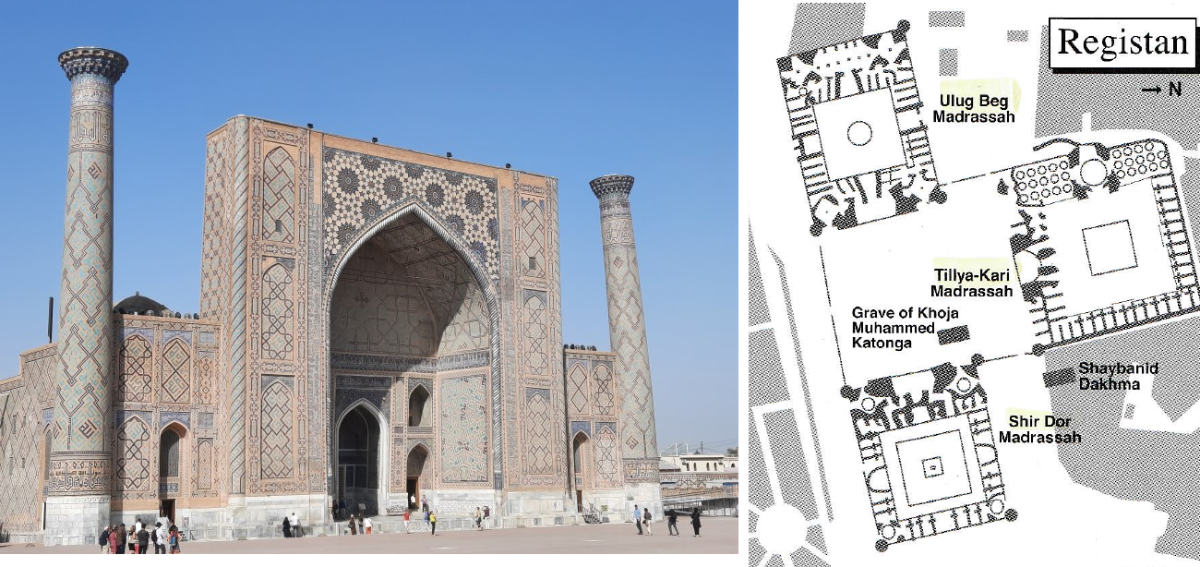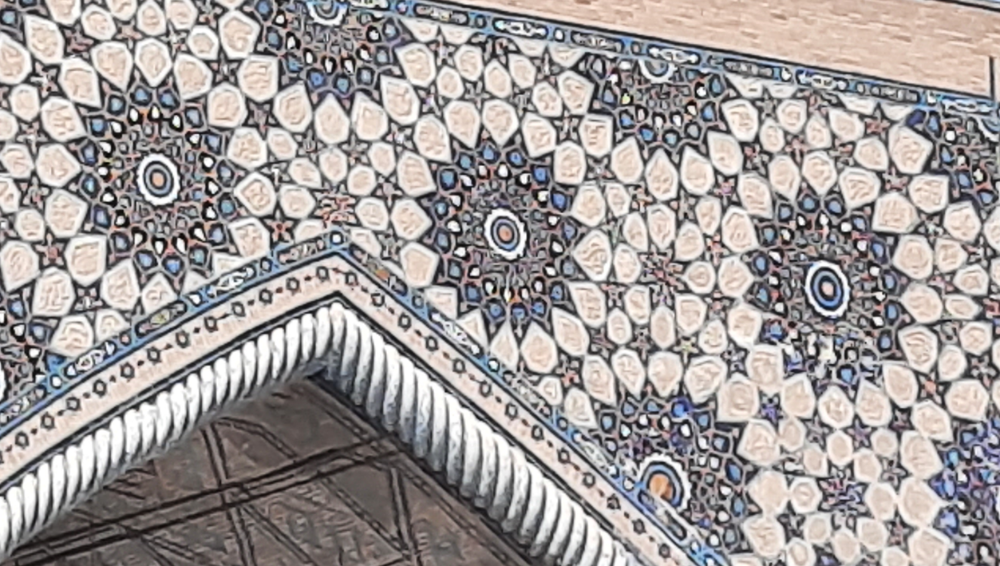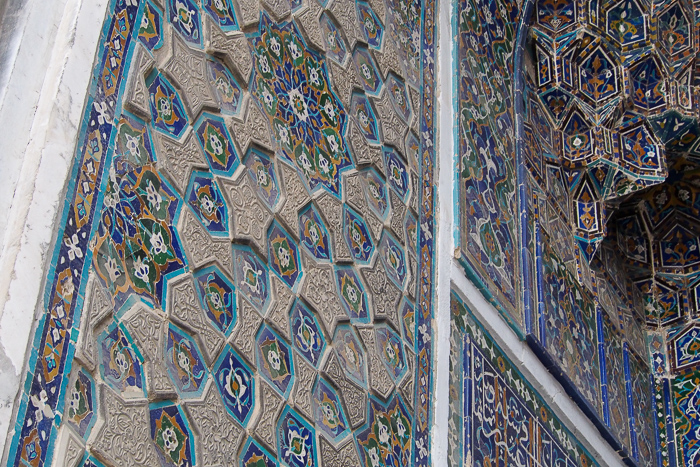Ulug Beg madrassa - spandrel - gp

Ulug Beg, the grandson of Timur Lenk, buit the Ulug Beg madrassa in 1417-1420. together with theTillya Kari madrassa and the Shir Dor madrassa it forms the impressive historical architectonic whole of the Registan square in Samarkand.
The iwan of the main measures 35 m, and is decorated with a geometric pattern and an inscription in kufic schript: "Thise magnificent façade is of such a height it is twice the heavens and of such weight that the spine of the earth is about to crumble."
The spandrel is decorated with a geometric pattern of remarkable 16-pointed stars. Mostly the greater stars go together with stars with half as much stars, often connected to the principle star by a wreath of polygons (often pentagons). This decoration shows 8-pointed stars, but the transistion is created in two steps.
- The 16-pointed stars are surrounded by a wreath of irregular hexagons.
- The 8-pointed stars are surrounded by a wreath of smaller irregular hexagons.
- Both wreaths define around the 16- and 8-pointed stars a wreath of 5-pointed stars.

Zooming in unto the pattern you cannotice that the design doesn't stop with the creation of a line pattern. A wide range of decorating filling remains.
Most remarkable is the colourful filling of the dark 16-pointed stars and the relief given to the white irregular hexagons.
Expoiting relief in decoration is also used on the side walls of the entrance. White ties, realised in relief surround flat 10-pointed stars that are colourfully painted.
